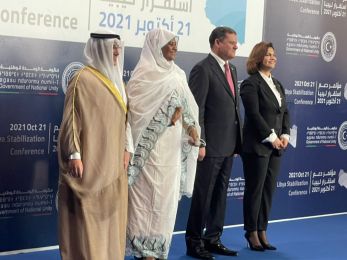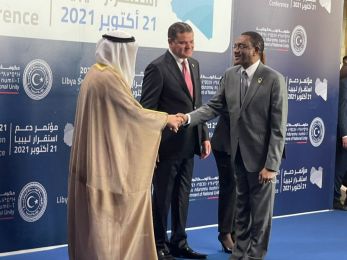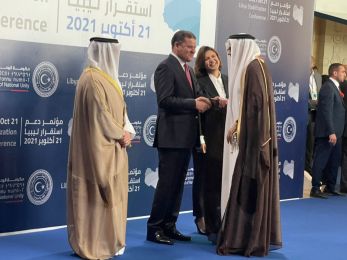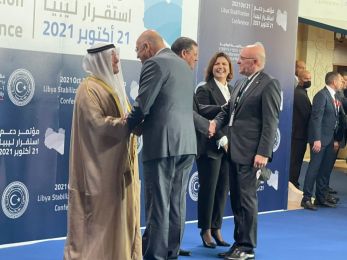Zimbabwe's President Emmerson Mnangagwa pilferage during DRC conflict resurfaces
Harare, Zimbabwe (PANA) - A United Nations (UN) Security Council report has cited Zimbabwean President Emmerson Mnangagwa in the pilferage of US$5 billion worth of mineral assets from the Democratic Republic of Congo (DRC).
The UN report came following the end of the Second Congo War in 2003 which began in 1998 due to rebel forces from the DRC ethnic group Banyamulenge challenging then leader Laurent-Désiré Kabila's rule after he deposed dictator Mobutu Sese Seko.
This was after Kabila had sent packing the largely Tutsi ethnic Rwandan officials who had initially supported his toppling of Sese Seko.
The Banyamulenge rebelled against Kabila for fear that, being of the Tutsi descent, they would be his next target.
The resulting conflict saw the intervention of a number of other African states, including Zimbabwe, in support of Kabila.
The report from the UN Security Council in October 2002, when foreign African nations were preparing to leave the DRC, noted an “elite network” of Congolese and Zimbabweans involved in the massive pilferage of minerals.
“The elite network of Congolese and Zimbabwean political, military and commercial interests seek to maintain its grip on the main mineral resources - diamonds, cobalt, copper, germanium - of the Government-controlled area. This network has transferred ownership of at least US$5 billion of assets from the State mining sector to private companies under its control in the past three years with no compensation or benefit for the State treasury of the Democratic Republic of the Congo. This network benefits from instability in the Democratic Republic of the Congo,” reads parts of the UN Security Council report.
“Its representatives in the Kinshasa Government and the Zimbabwe Defence Forces have fueled instability by supporting armed groups opposing Rwanda and Burundi.
“Even if present moves towards peace lead to a complete withdrawal of Zimbabwean forces, the network's grip on the richest mineral assets of the Democratic Republic of the Congo and related businesses will remain,” the re[ort said.
According to the report, Zimbabwe's political-military elite signed six major trade and service agreements in August 2002 with the government of the Democratic Republic of the Congo.
“The key strategist for the Zimbabwean branch of the elite network is the Speaker of the Parliament and former National Security Minister, Emmerson Dambudzo Mnangagwa.
“Mr. Mnangagwa has won strong support from senior military and intelligence officers for an aggressive policy in the Democratic Republic of the Congo. His key ally is a Commander of ZDF and Executive Chairman of COSLEG, General Vitalis Musunga Gava Zvinavashe. The General and his family have been involved in diamond trading and supply contracts in the Democratic Republic of the Congo.”
COSLEG is a joint venture company that was formed by a DRC-based entity Congo Comiex and the Zimbabwe Defence Forces's company Operation Sovereign Legitimacy (OSLEG).
The 2002 UN Security Council report stated that “Air Marshal Perence Shiri (current Zimbabwe Agriculture minister), a long-time ally of President Mugabe, had been involved in military procurement and organizing air support for the pro-Kinshasa armed groups fighting in the eastern Democratic Republic of the Congo”.
He was also alleged to be part of the inner circle of ZDF diamond traders who had turned Harare into a significant illicit diamond-trading centre.
Other prominent Zimbabwean members of the elite network included Brigadier General Sibusiso Moyo (current Foreign Affairs and International Trade minister) who is Director General of COSLEG.
"Brigadier Moyo advised both Tremalt and Oryx Natural Resources, which represented covert Zimbabwean military financial interests in negotiations with State mining companies of the Democratic Republic of the Congo. Air Commodore Mike Tichafa Karakadzai is Deputy Secretary of COSLEG, directing policy and procurement,” reads part of UN Security Council report.
Former Minister of Defence and former Security Minister Sidney Sekeramayi was found to have coordinated with the military leadership between DRC and Zimbabwe at the time.
He was also named as a shareholder in COSLEG.
Sekeramayi was former Zimbabwe President, Robert Mugabe's heir apparent to succeed him before he was ousted through a military-backed coup in November 2017.
“The Panel has a copy of a letter from Mr. Sekeramayi thanking the Chief Executive of Oryx Natural Resources, Thamer Bin Said Ahmed Al-Shanfari, for his material and moral support during the parliamentary elections of 2000.
“Such contributions violate Zimbabwean law,” read part of the UN Security Council report.
The report titled “Plundering of DR Congo natural resources: Final report of the Panel of Experts” was approved by the then UN Secretary General, the late, Kofi Atta Annan.
Mahmoud Kassem was chairman of the Panel of Experts tasked with investigating what happened with the DRC's mineral resources as foreign nations prepared to leave.
The UN Security Council report resurfaced on the internet on Saturday.
Back in 2001, through Wikileak cables, Mnangagwa was described as being seriously wealthy by a US ambassador in a document sent to the United States State Department. However, the leaks did not report his wealth in numbers.
Mnangagwa, mining tycoons John Bredenkamp and Billy Rautenbauch, were implicated as major beneficiaries of Zimbabwe's military contracts and mining concessions in the DRC.
The MDC Youth Assembly, nearly two weeks back, accused Mnangagwa of being involved in several illegal mining activities in the gold and chrome industries.
-0- PANA TZ/RA 14Jul2019






